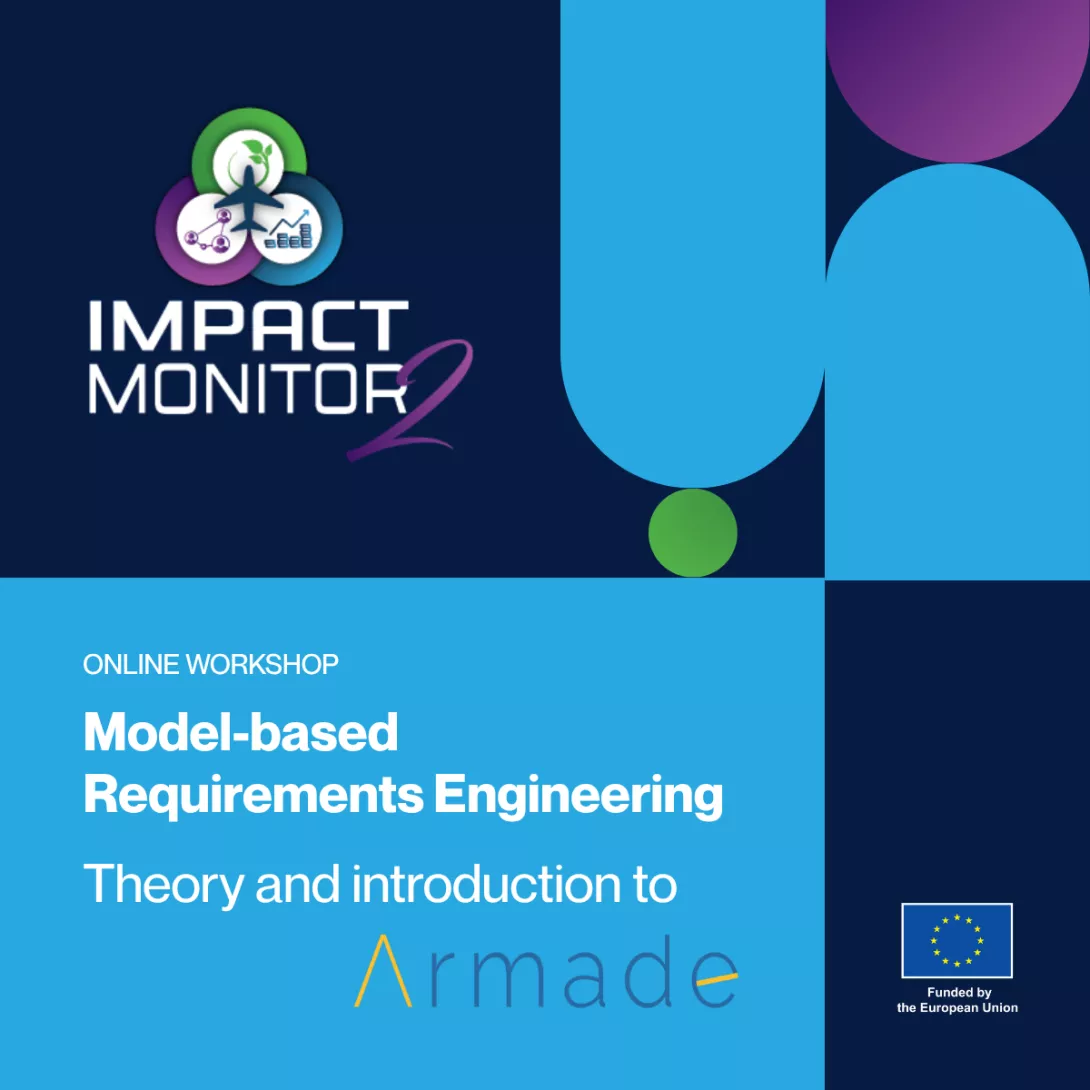
Advancing Requirements Engineering in Impact Monitor 2
Understanding and translating stakeholder needs into system design is a fundamental process in any complex research and innovation project—especially when it comes to aviation impact assessment. That’s why Impact Monitor 2 (IM2) has placed a strong emphasis on requirements engineering from the very beginning.
As part of this commitment, the IM2 consortium recently held an online workshop titled:
“Model-Based Requirements Engineering: Theory and Introduction to ARMADE”.
Hosted and presented by DLR’s Institute of System Architectures in Aeronautics, the session introduced partners to ARMADE—a model-based systems engineering (MBSE) environment developed by DLR’s Institute of System Architectures in Aeronautics the German Aerospace Center (DLR).
Why Requirements Matter
In aviation R&I impact assessment, a clear and traceable line connects stakeholder needs to system performance. The process can be visualized as follows:
Needs → become Requirements
Requirements → guide the design of Systems
Systems → are deployed in scenarios, where they are assessed using indicators like CO₂ emissions, noise levels, and cost
This structured approach ensures that technological and operational innovations are evaluated in ways that reflect the priorities and expectations of the stakeholders they are meant to serve.
Requirements Engineering in Action
Within Impact Monitor 2, this methodology is now being actively applied. Using ARMADE, project partners have begun defining two major areas of requirements:
- For the Impact Assessment Studies, where technologies and operational concepts are evaluated
- For the development of the Framework, Data Model, and Dashboard, which form the backbone of the IM2 Toolbox
This early-phase work will directly shape the design of simulation workflows, ensure alignment with stakeholder expectations, and provide a consistent basis for assessing technologies in complex, real-world scenarios.
Acknowledgements
The workshop was moderated by Luca Boggero, on behalf of DLR’s Institute of System Architectures in Aeronautics.